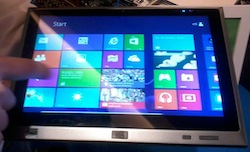We’re in a world where it’s increasingly assumed that you’re carrying a screen all the time – tablet, smart phone or laptop. Maybe you’ll even have Apple’s long rumored iWatch on your wrist.

Westjet, a Canadian bargain airline, is thinking about ripping out the entertainment systems from its planes, saving 500 kg in weight and who knows how much in upkeep, and replacing it with a WiFi-based system that streams video to passengers’ BYOD of choice.
Whether or not that particular gambit works, we’ll be seeing more and more media business models – large and small – built on that assumption.
Direct media distribution is already at that point. There’s very little current audio or video or text content that can’t be accessed on the device of your choosing, and producers routinely create snackable content for mobile consumption.
Indirect media is making the same transition. There’s already electronic distribution of interactive restaurant menus, airline boarding passes and product brochures. Even rental car keys.
Individually, this stuff is neither new nor remarkable. But it’s still a relative novelty that coexists with printed paper, theater screens and public address systems. It won’t for very much longer, though, as the default choice for incidental information delivery moves from paper and loudspeakers to wearable screens and ubiquitous ear buds.
The major obstacle – call it a market gap opportunity – is the unpredictability of customers’ gear. Marketers are obsessive about controlling their message and product managers have to negotiate trade offs between the richness of an experience and the number of potential customers they can reach.
Enable consistent content and quality of service regardless of the point of delivery and you’ve enabled a new world.
